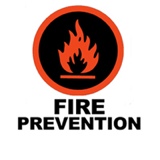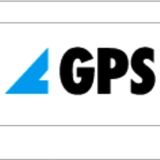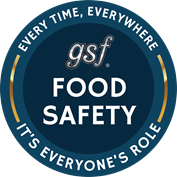Information
-
Document No.
-
Audit Title
-
Client / Site
-
Conducted on
-
Prepared by
-
Location
-
Personnel
1.0 Fire Prevention
-
1.1. Does the site have a smoking policy with clearly defined smoking areas and are these being adhered to?<br><br>Check for smoke butts outside of smoking areas. Are butt bins being utilised in the smoking areas?
-
1.2. Does the site have Hot Work Procedures implemented?<br><br>Check hot work procedure include fire watch and monitoring.<br>Check hot work procedure records have been completed properly.
-
1.3. Is there sufficient clearance from trees growing under or adjacent to overhead power-lines?
-
1.4. Does the site impose hot work restrictions during fire danger periods or Total FIre Ban days?<br><br>Restrictions on hot work activities are imposed by fire brigade authorities. Permits to carry out hot work during fire danger or total fire ban periods may be required. Check with local fire brigade.
-
1.5. Does the site have any classified Hazardous Areas i.e. Zones 1,2 or 3)?<br><br>Hazardous areas are where a flammable atmosphere is likely to be present. Some typical examples are LPG storage tank, Natural Gas Meter, flanged bolted connections on flammable gas pipeline systems, etc
-
Is there a Hazardous Area plan that shows the extent of Zone classification? Is there adequate signage in these areas?<br>
-
Is there unobstructed access to fire fighting equipment?
-
Are all electrical equipment appropriate for the Zone classification?<br><br>Electrical equipment includes motors, pumps, light fittings, instrumentation, etc. may need to be intrinsically safe, non incendive
2.0. Means of Escape
-
2.1. Are evacuation routes clear of obstructions?<br><br>Evacuation routes must be at least 1 metre wide, and does not have any obstructions or trip hazards
-
2.2. Are exit doors clear of any obstruction within 2 metres?
-
2.3. Are exit doors and hardware in proper operable condition?<br><br>Exit doors must be opened by single handed downward or pushing action using level handles or panic bars.
-
2.4. Are all Exit Signs along the path of egress clearly visible, and good condition?<br><br>Ensure exit sign is illuminated and/or undamaged
-
2.5. Are fire/smoke doors unobstructed and undamaged?
-
2.6. Are smoke/ fire rated walls free of unprotected penetrations or service cables/ pipes?<br><br>Penetrations through fire/ smoke walls including penetrations with services are to be appropriately sealed i.e fire collars, fire pillows etc. Air handling ducts through smoke/fire wall should be installed with fire dampers.
-
2.7. Do evacuation signs/ diagrams contain the required information and correctly oriented
-
2.8. Are egress stairs unblocked and in good condition?<br><br>Check for damage to stair handrails, stringers or supporting steelwork.<br>There should be no obstructions on the stairs or landings, including tripping hazards such as hoses, loose materials, scaffolding etc.
-
2.9. Are all egress stairs and exit doors clear of any excessive combustable or flammable materials?<br><br>Combustible or flammable materials (ie paper or cardboard, used oily rags, lubrication or hydraulic oil, gas cylinders etc) should not be stored underneath egress stairs, or adjacent to exit doors (ie within 3 metres unless protected by a fire rated wall or fire sprinklers).
3.0. Maintenance of fire safety installations
-
3.1. Are fire extinguishers in their locations, have proper signage and have not been discharged?
-
3.2. Are fire hose reels rolled up and in good condition?<br>
-
3.3. Are fire hydrants and fire hydrant enclosures in good condition and contain 30m long lay flat hose and fire hose nozzle? <br><br>Storing lay flat fire hoses next to external fire hydrants may not be mandatory. if this is the case, there should be a location on site where they are stored and can be readily accessed at all times.
-
3.4. Are the fire brigade booster connection points unobstructed, undamaged and signposted?<br><br>Sites could have a fire hydrant and fire sprinkler booster connection points. Access for the local fire brigade should be maintained at all times.
-
3.5. Are fire sprinkler and hydrant system pipe work and equipment in good condition?<br><br>Visual check pipe work for damage or corrosion.
-
3.6. Does site undertake regular fire system underground valve monitoring?<br><br>Underground valves should be checked on monthly basis to ensure that it is in the correct open or closed position and exercised annually.
-
3.7. Are maintenance records for following fire safety systems current and available on request?
Routine fire service frequencies as a minimum should be in accordance with AS1851 and where relevant Insurers requirements -
3.7.1. Exit signs/ emergency lighting
-
3.7.2. Fire extinguishers
-
3.7.3. Fire hose reels
-
3.7.4. Fire hydrants
-
3.7.5. Fire sprinkler and alarm system (includes fire pumps, fire control valves, smoke and heat detectors, break glass alarms, evacuation alarm etc)
-
3.7.6. Fire cannons
-
3.7.7. Fire and smoke doors
-
3.7.8. Smoke extraction fans and/or fusible link smoke or heat vents
-
3.7.9. Smoke/ fire dampers in air handling systems
4.0. Housekeeping
-
4.1. Does the site have a regular inspection and cleaning program for following areas where there may be excessive accumulation of combustable dust and/or materials (I.e. paper, cardboard, wood, plastic, etc)
-
4.1.1. Conveyors and conveyor pits ( ie clipping, waste paper, wood chips, etc)
-
4.1.2. Cyclone and dust extraction systems
-
4.1.3. Paper machine hood, economiser, ductwork and plenum system, broke conveyor and basement areas etc<br><br>Accumulation of paper, dried pulp and/or paper dust creates a significant fire hazard. A regular housekeeping program for cleaning high risk areas should be in place.
-
4.1.4. Electrical cable trays, air handling ductwork, piping, ceilings, structural beams, roof, gutters etc
-
4.1.5. Electrical equipment (ie motors, transformers, switchboards, etc
-
4.1.6. Waste storage areas and buildings<br><br>Including storage of paper machine rejects, bales of PET and HDPE bottles ect
-
4.1.7. Accumulation of paper or other combustable material underneath PME?<br><br>PME operating in waste yards should be checked at least daily. Any combustable materials caught on the underside of mobile plant should be immediately removed.
-
4.2. Is grass and other vegetation areas on site or external to site maintained to prevent bushfire risk?<br><br>This may include long grass, weeds, dead trees or shrubs on Visy property or neighbouring properties etc
-
4.3. Is there residue Lubrication oil, Hydraulic oil or diesel fuel in bunded areas resulting from leaks or spills?<br><br>Residue combustable liquids in bunded areas that may have resulted from spills or leaks can create a fire hazard and should be cleaned up regularly.
5.0. Storage of Combustable and/or Flammable materials?
-
5.1. Is there adequate clearance of between external pallet storage and adjacent buildings?<br><br>Pallets should be at least 15 metres from face of building, unless stored against a fire rated wall or wall protected by fire sprinkler system.
-
5.2. Are all pressure gas cylinders securely fastened in an upright position by way of steel chains and steel brackets.
-
5.3. Are Acetylene and Oxygen cylinders stored appropriately in separate areas at least 3 metres apart or divided by a fire rated wall?<br><br>Ensure cylinders are secured and stored vertically
-
5.4. Are flammable gases or liquids stored in bunded areas with adequate separation from buildings, combustable materials and/or other incompatible chemicals? <br><br>Flammable liquids or gases should be stored in designated areas and if in small quantities, stored inside a Safe Storage Cabinet for flammable materials. They should be stored away from any ignition sources, oxidizers or corrosive chemicals.
-
5.5. Are waste paper bales stored in stacks no greater than 1000 tonnes, with minimum aisle clearance between stacks of 7.5 metres, from buildings of 10 metres and Fire Monitors and/ or Fire Hydrants of 5.5 metres.<br><br>
-
5.6. Is the storage height of paper reels or other combustable materials in the warehouse areas within the design fire sprinkler capacity and below the minimum clearance height from fire sprinkler nozzles?<br><br>These requirements vary from site to site depending on the fire sprinkler design standards, paper product type, and storage arrangement. Check with Visy's insurance company for your specific site requirement.








![[EN] 505N0042A02 - Supplier Process Audit Template DCS - Detailed [EN] 505N0042A02 - Supplier Process Audit Template DCS - Detailed](/media/a13d9f4d-dd4d-4b14-82c4-93ab26a92bfa)



